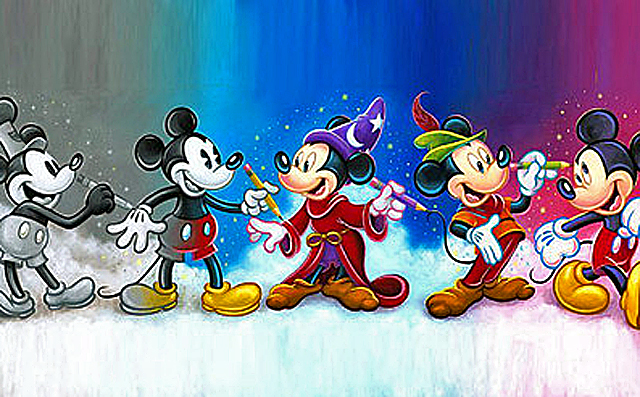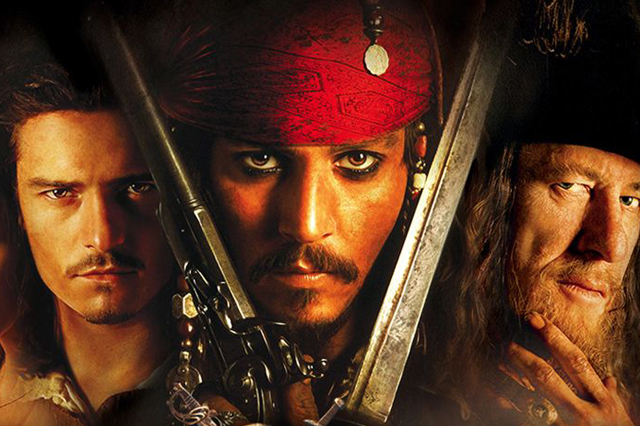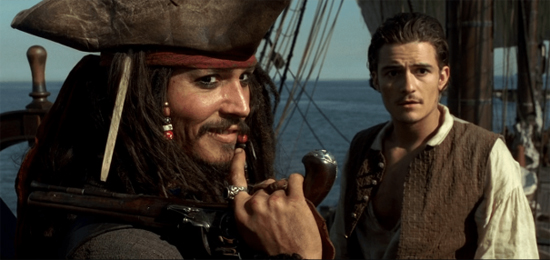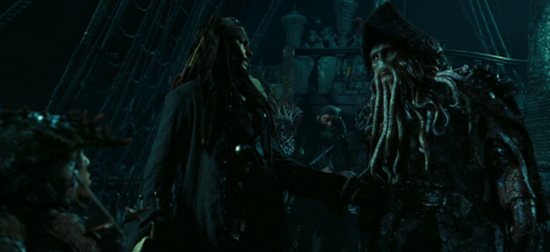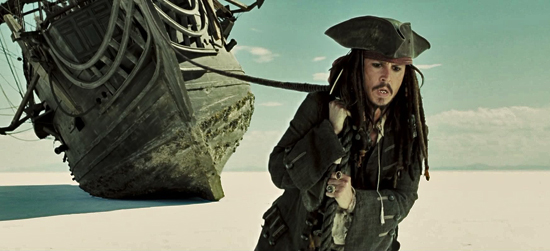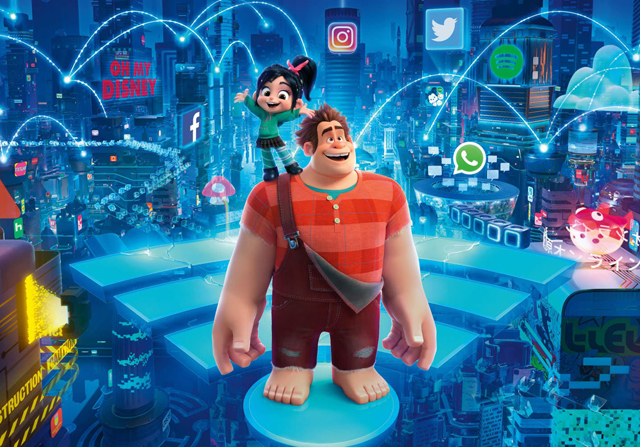
The 2012 animated film, Wreck-It Ralph, holds a very interesting place within the Disney canon. It was the first animated film to be released after Disney’s noble but ultimately short-lived attempt at reviving the traditional animated format, with The Princess and the Frog (2009) and Winnie the Pooh (2011). It was also the first computer animated film from the company’s in-house studio to distinguish itself, after the less than popular outings of Chicken Little (2005), Meet the Robinsons (2007), and Bolt (2008). For the first time, Disney showed that they could create an computer animated feature that could compete on the same level as their output from Pixar. And though Wreck-it Ralph was no record setter, it did well enough to gain a following and helped to set the Disney Animation Studio located in Burbank, California on the right footing that would quickly blow-up soon after with Frozen (2013), Zootopia (2016), and Moana (2016) soon after. And I think that the reason Wreck-it Ralph worked as well as it did was because it was an animated film from Disney that had it’s own unique identity. You could tell from earlier CG animated flicks from Disney that they were struggling with the medium, as animators who were more comfortable with sketch drawings were suddenly forced to learn a whole new way to animate, and it often reflected in stories that never quite felt quite right in this style of animation. Ralph, on the other hand, is tailor-made for computer animation. It takes place in a world of video games after all, so there really was no other way to visualize that world other than through CGI. It was a hit with both audiences and critics, and was a touchstone for the legendary cartoon maker, which now has led Disney to make another unusual step that you don’t see from them very often; making an animated sequel to one of their movies.
Now, when I say that Disney sequels are rare, I am of course ignoring the often maligned direct-to-video sequels of the 90’s and 2000’s. It’s a recognized, canonical sequel that Disney rarely ever undertakes, and to date there have only been three previous ones; The Rescuers Down Under (1990), Fantasia 2000 (2000) and Winnie the Pooh. This new follow-up to Wreck-it Ralph titled Ralph Breaks the Internet marks the first sequel ever for one of Disney’s computer animated features (and it won’t be the last, as Frozen 2 is scheduled for next year). But the question is now, how do you carry on from where the last one left off. The answer would have been simple for most animation studios; because the first movie was populated by so many famous video game icons of the past, it would make sense to continue showing even more game characters thrown into the mix that weren’t in the original. However, the filmmakers behind this sequel decided to go in a whole different direction. Instead of just limiting their world to just the denizens of an arcade community, they decided to broaden their scope and take a look at the whole world wide web itself. There within they have the opportunity to take their retro-minded characters and bring them into a fast paced world that they are initially not quite ready for. The premise also allows for a cheeky, satirical look at all things internet related, which makes you wonder if they can contain it all in one short 90 minute run time. It’s a bold move regardless, because it shows that Disney is not just rehashing the same plot over again, which some animated sequels unfortunately tend to do. The question remains is whether Disney is able to find a story within that premise that manages to live up to the original. It also remains to be seen if the choice of tackling the internet as the setting provides enough fodder for an entertaining adventure, or if it’s too out touch with the realities that real internet experiences have in our daily lives today.
The story picks up 6 years after the original, which is exactly the same amount of time between movie releases as well. Wreck-it Ralph (John C. Reilly) and Vanellope Von Schweetz (Sarah Silverman) continue to spend their days together as best friends, bouncing from game to game in the Litwak’s Arcade that they call home. One day, Mr. Litwak (Ed O’Neill), the arcade owner, plugs a new device into their terminal, which turns out to be a WiFi router. After a malfunction leaves Vanellope’s game, Sugar Rush, broken and unplugged, Ralph and her begin to believe they can find the solution to their problem by using the new device to explore the Web. After leaving all the remaining Sugar Rush teammates behind with their close friends Fix-it Felix (Jack McBrayer) and Sgt. Calhoun (Jane Lynch) as their new caregivers, Ralph and Vanellope enter the router and find the terminal that leads to the internet itself. Once through the portal, they find a vast open community that’s home to numerous sites like Amazon, Google, Instagram, and the place they need to go the most; Ebay. There they find the replacement part they need for Vanellope’s game, but are unable to afford it. Looking for ways to raise money fast leads them to an open world racing game called Slaughter Race, where they need to steal the car of the game’s most expert driver, Shank (Gal Gadot). Though unsuccessful with their heist, they do earn the admiration of Shank, who suggests that they should talk to a viral marketing algorithm that can help them get rich quick named Yesss (Taraji P. Henson). Yesss sees the potential in Ralph’s clumsy behavior and immediately puts him to work making viral videos that will make money with the more likes he receives. Meanwhile, Vanellope is put to work with spreading the link to Ralph’s videos, which leads her to of all places, the Disney website, where she has a pivotal encounter with the Princesses who convince her to look deep inside to understand what she really wants in life. The only question is, is what she wants something that might tear her friendship with Ralph apart?
The movie certainly has a lot to pack into it’s short run time, and for the most part, it does pull it off nicely. The movie’s greatest asset is the sense of humor, which is even more fast paced than the previous film. A major part of the enjoyment of this movie is just in catching all the background jokes, relating to all sorts of puns related to the internet. Some things are easy to catch, but others are pretty subtle. There’s a moment later in the film where Ralph ends up on the lower depths of the internet, and in the dark and dusty scraps of this graveyard like area, you can see signs for Dial-Up service and AOL; a nice nod to relics of the old internet that a keen eye can get a good chuckle out of. I would say that this is probably the most consistently funny movie in the entire Disney canon, because unlike the other movies before it, it does not add any sugar to the spice; it is wall to wall jokes unhampered by schmaltz. And for the most part, the jokes hit their mark. Anyone familiar with the highs and lows of navigating the internet will find a lot pointed jabs at everything great and not so great about the service. One of my favorite funny moments in the movie is seeing how the outside world interacts with the citizens of the online world. In the Slaughter Race section, we see the online players animated in a jumpy, glitchy way compared to every else because that’s how an online avatar would act when controlled through a joystick or controller. The movie does keep things PG, as the darker elements of the web are wisely not mentioned or are in the carefullest of ways; though surprisingly the Dark Web does make an appearance, albeit in a sanitized version. I also liked the fact that Disney didn’t overdo it with the visit to their own website. What could have easily turned into shameless self promotion thankfully holds together as a nice excuse for meta humor directed at itself. And that Princess scene is likely going to become one of the most talked about moments of the year, and is made all the more impressive when you learn that most of the princesses retain their original voice actors, as do a couple Marvel and Star Wars characters as well.
The one negative I can say about the movie is that it’s pretty light on story. The central conflict is pretty well established early on, and the movie does little to really delve much deeper throughout the rest of the story. Basically it comes down to Ralph having too many insecurities and it’s made him into a clingy friend, which is starting to hold Vanellope back from achieving her own dreams. The movie’s break-neck pacing and huge amount of entertaining humor can make you forget about the plot’s shortcomings through most of the movie, but after a while, you do kind of realize that about halfway through, the filmmakers pretty much ran out of story. That inevitably leads to an underwhelming final act, in which Ralph and Vanellope head towards a final confrontation that is a very heavy handed metaphor for the status of their relationship. While the finale does take the movie into epic territory in terms of scale, it doesn’t have the emotional heft that you found in the first movie. At the end of the original Wreck-it Ralph, Ralph’s arc found him believing in himself to where he could live with acting as the bad guy while being a hero where it counts. It also helped that there was a strong antagonistic presence in that movie in the form of the villainous King Candy, played by Alan Tudyk (who’s also in the sequel playing a Truman Capote-like search bar character named Knowsmore). Sadly, this is a Disney movie without a villain, which doesn’t necessarily ruin the movie, but is still missed nonetheless. While the humor is definitely ratcheted up, I still think that the lack of cohesive story does bring the movie a notch below the original. And it’s surprising that even with a longer than normal runtime of 112 minutes, the movie still drops a lot of plot elements for no reason. An entire B-plot involving Felix and Calhoun seemed to be set up and is completely forgotten about for almost the entire movie; something which I think the directors were aware of, because there is a funny joke near the end that references how their whole arc was completely left off screen. Overall, I’ve seen movies handle their story more poorly, but the lack of it here is still something that holds the movie back from being truly amazing.
One of the movie’s greatest assets however is the visualization of the internet world. Like I mentioned before, a big part of the movie’s humor is in the little background jokes you can find throughout the movie, and it’s a great credit to the filmmakers for putting so much effort into things that will likely go unnoticed on first viewing. It’s also incredible watching the many different ways that they re-imagined different websites throughout the online world, making each a different skyscraper in the expansive metropolis that we see in the movie. Some are cleverly visualized, like Twitter being represented by a large aviary housing bird-like tweets. Even the made up online communities like Yesss’ BuzzTube website and the Slaughter Race game are presented in a visually interesting way. I especially like all the details put into the Slaughter Race environment, which does a fairly good job of recreating the look of most post-apocalyptic online multiplayer open world games. It even manages to throw in some ridiculous elements like sewer sharks, and still make it feel not out of place. Even with all the tongue-in-cheek representations of real websites, the movie still does a good job of not making any of it distracting. Compare this with a similarly themed movie from last year called The Emoji Movie, which was really pushy when it came to showing off all the different brands that they got product placements for. When Emoji Movie stops the progress of the story just to have it’s characters play a game of Candy Crush for 5 minutes, you can easily see the cynicism on display, as the movie clearly just existed to cross promote. Ralph Breaks the Internet thankfully refrains from shilling for all the corporate brands too heavily, and it’s all better integrated into the story itself, because seeing all the recognizable brands in the background help to give the online world a sense of authenticity. Not seeing them there would have made the film feel a little weird, as the filmmakers would’ve been forced to make up new websites, which would have been a self-defeating chore. Thankfully, the online world is fully realized and is integrated into the story much better than it otherwise could have been, had a more cynical approach been in place.
The movie also benefits from a well-rounded cast, both returning and brand new. One of the things that really helped out the original was the genuine chemistry between the two leads, Ralph and Vanellope. Their relationship was at the heart of the first film, and it does continue in the same way here as well. Though the movie does struggle to generate story momentum through the arc of their story, it still benefits from that chemistry, and the film soars every time they share the screen together. It helps that John C. Reilly and Sarah Silverman are clearly having fun voicing these two characters. Reilly’s performance primarily remains the same in both films and he is still really funny in the role. I especially like how much he has fun doing his variations on famous viral videos of the past. Sarah Silverman is actually given a more improved role in this outing, as her character has both more screen-time and more of an arc. I like what the did with Vanellope a lot more in this film than the last, as she sees her options opened up a bit more in the online world. Her interaction with the Disney Princesses is a particular highlight, especially in how out of place she seems initially. The movie even gives her a princess song, written specially by famed Disney songwriter Alan Menken just for this movie, and it’s not just a hilarious parody of a classic Disney tune, but also touchingly performed with gusto by Silverman, clearly enjoying her moment. Other new characters are briefly used, but nevertheless make an impact. I especially liked Gal Gadot’s Shank, who stands out as a enjoyably rough but good-hearted ally for our heroes. Taraji P. Henson is also hilariously over-the-top as Yesss, tapping into that no-nonsense executive mentality that makes her brief moments on screen worthwhile. Getting all the Disney Princess voices together is also an impressive feat, and you can hear how much fun the actresses are having poking fun at their previous roles, especially with Princess Merida’s ultra-thick Scottish accent. And though they are sadly sidelined for most of the movie, Jack McBrayer and Jane Lynch are still hilarious in their brief moments as Felix and Calhoun. Overall, the cast helps to make this an enjoyable experience and one that will entertain just as well as the original.
As far as sequels go, Ralph Breaks the Internet does a lot of things right. It stays true to the characters and also expands the world, making it bigger in scale and also broadens the humor. It unfortunately seems to run out of story halfway through, and even with a nearly 2 hour runtime, the lightweight plot does feel padded at times. Thankfully most of the filler is entertaining enough to keep the movie afloat, but I just wish that the filmmakers had found more conflict within their narrative to justify the extra time they had. I understand that they had some limitations; there is only so much you can explore about the internet within a PG-rated story. You obviously can’t go into too much detail about the worst parts of the internet like the trolling, the hate speech, and the other taboo spots that thrive within there. The closest the movie gets is when Ralph finds his way into the comments section of the BuzzTube page, and learns very quickly how toxic things can be on the internet. I would have liked to have seen more of the de-humanizing and anti-social aspects of online activity be brought more into the story as an antagonistic threat to the characters, but what we got instead is not exactly bad either. There is still plenty to enjoy about Ralph Breaks the Internet, especially through the movie’s sense of humor. I like the fact that it doesn’t dwell too long on some jokes and keeps the pace up throughout the entire movie. There are even some treats left for us through the end credits (and please wait until the very end for an especially hilarious parody). It’s good to see that this was a sequel worthy of it’s place in the Disney canon. While there isn’t anything in it exactly that will break the internet itself, it’s still a very enjoyable romp that will keep families entertained over these upcoming holidays.
Rating: 8/10

